The Phoenix cucumber variety, popular among summer residents, has high yields and excellent taste.
The article contains important and necessary information about the Phoenix cucumber variety. You will learn about how to grow them, how to protect them from diseases and pests, and how to use the crop. We also bring to your attention reviews from summer residents who have already grown Phoenix on their plots.
Description of the cucumber variety
The Phoenix variety was bred by A.V. Medvedev in the 80s of the 20th century at the selection station in Krymsk.
This the only crop that suffered an epidemic of downy mildew in one season, which destroyed the rest of the plants. The variety owes its name to this circumstance.
Distinctive features
The Phoenix cucumber variety differs from others in that it does not suffer from the cucumber mosaic virus. Powdery and downy mildew also avoid it, it is unpretentious in care, and produces a consistently large harvest. Phoenix fruits are harvested until late autumn.
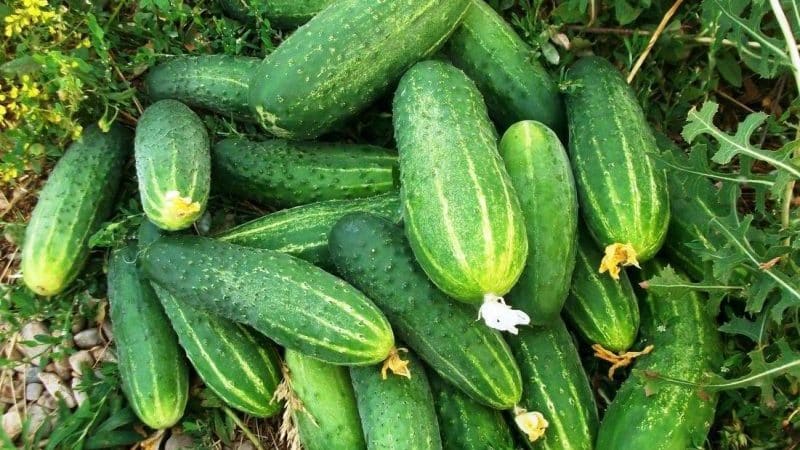
Composition, properties, benefits, calorie content
Cucumber is 95% structured water. Eating these vegetables allows you to flush your kidneys and remove waste and toxins from the body. It also contains vitamins A, B1, B2, C, PP, beta-carotene and a large amount of essential minerals: potassium, sodium, magnesium, iodine, chlorine, chromium, phosphorus, copper, manganese, zinc, iron and folic acid .
Cucumber is the leader among vegetables in the amount of fiber, which serves as a gentle, non-discomforting cleansing of the intestines. Improves the functioning of the thyroid gland, prevents the formation of cholesterol plaques.
People with nephritis and kidney disease, chronic gastritis and stomach ulcers, especially in the acute stage, should use these fruits with caution.
Calorie content is 15 kcal per 100 g of product.
Characteristics of bushes and fruits, yield
The variety is recommended for cultivation in open ground. The length of the lashes reaches 3 meters. The bushes have strongly growing branches. The vines bear mostly female flowers and are pollinated by bees. Phoenix is a late-ripening variety, fruiting begins on the 60th day after the first shoots, harvesting can continue until the first frost.
Cucumbers are oval-cylindrical, triangular in cross-section, dark green in color with white longitudinal stripes. The length of the fruit is 15-16 cm, weight from 150 to 190 g. The surface of the cucumbers is tuberous with white thorns. If growing conditions are not met, it may appear bitterness. Stored for up to 15 days under normal conditions. Productivity - up to 5 kg of fruits per 1 m².
How to grow this variety yourself
To get an excellent harvest, the soil and seed must be carefully prepared.
Planting by seeds and seedlings
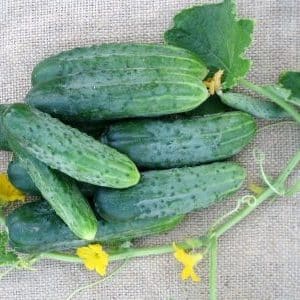
Seeds from the manufacturer have already been processed and disinfected; they can be sown without preliminary procedures. If they are assembled by hand, they must be hardened. To achieve the desired result, the seeds are wrapped in a damp cloth and placed in a cold place for several days, then kept warm for another 2 days. After this, planting is done in the soil.
The soil for sowing is disinfected. You can pour potassium permanganate or bake it in the oven a month before planting. 2-3 weeks before sowing the seeds, the soil is enriched with humus and compost at the rate of 2-3 kg per 1 m², mixing these components in equal proportions.
Sowing of seedlings occurs in the first days of May; planting in the ground occurs in late May - early June. If the seeds are sown directly into the ground, then the timing is the beginning of June, when the ground is already sufficiently warmed up.
Important! The planting site is equipped with trellises or other supporting structures.
The distance between rows should be 40-50 cm, between bushes - 10-15 cm. Sow to a depth of 1-1.5 cm.
Growing and care
It is important to care for cucumbers correctly and in a timely manner:
- water warm water in the evening to avoid burns;
- for the full development of the root system, loosen and mulch the soil after watering;
- feed plants with complex and mineral fertilizers, as well as slurry;
- after the first true leaf appears, fertilize the roots weekly with Kemira-Lux fertilizer, dissolving 20 g in 10 liters of water;
- when the fifth true leaf appears, pinch the main stem, after which the plant begins to develop into lateral shoots;
- after the flowers appear, treat “sheet by sheet” with Boroplus solution;
- affected by disease or pests the bushes are treated with Bayleton, Quadris, Tiovit-jet, Topaz and Topsin-M.
Features of cultivation and possible difficulties
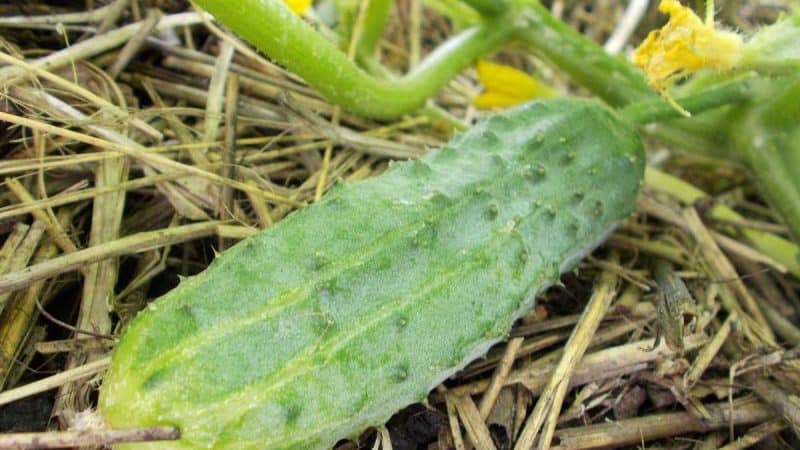
The variety is easy to care for and not susceptible to diseases.
However, when growing, it is important to provide the plants with conditions for development:
- fertile soil;
- sufficient lighting during the day;
- regular fertilizing with organic and mineral fertilizers;
- planting away from related crops.
The best place for cucumbers is where beans, potatoes or tomatoes used to grow.
Diseases and pests
The Phoenix variety is resistant to most diseases and does not attract pests. However, the crop is susceptible to white rot. When plantings become infected, damaged plants are burned and the top layer of soil is removed. After this, it is important to monitor the degree of soil moisture: do not allow it to dry out or become waterlogged.
If cucumbers are attacked aphid or spider mite, just spray the plants with tobacco infusion or water with Karbofos solution.
Harvesting and application
It is recommended to harvest once every 1-2 days. Overgrown cucumbers draw a lot of moisture and minerals from the bush, which greatly depletes the plant.
Cucumber is versatile in use. It is used fresh in various salads and other dishes; it is also good in canned condition. A festive table is not complete without delicious pickled or pickled cucumbers. Due to its low calorie content, it is in demand as a dietary product.
Advantages and disadvantages of the variety
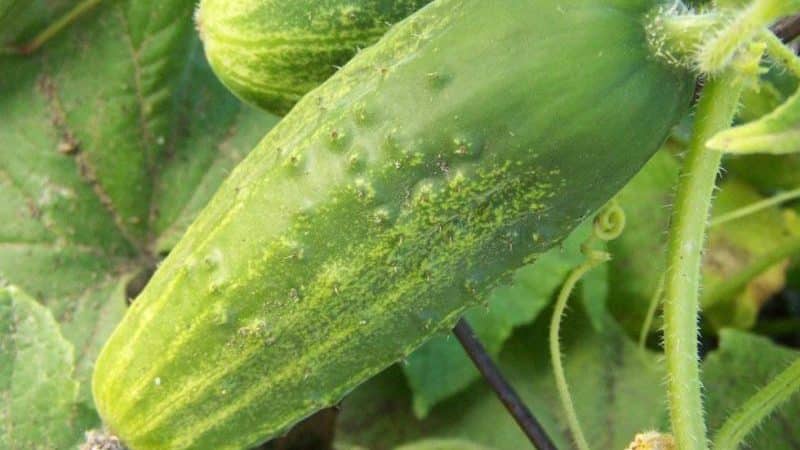
The variety has many advantages. Among them:
- resistance to viruses and diseases;
- drought and cold resistance;
- long fruiting period;
- high productivity;
- keeping quality of fruits up to 15 days;
- Wonderful taste fresh and canned.
Disadvantages include their late ripening. However, this minus is compensated by the duration of fruiting.
Reviews
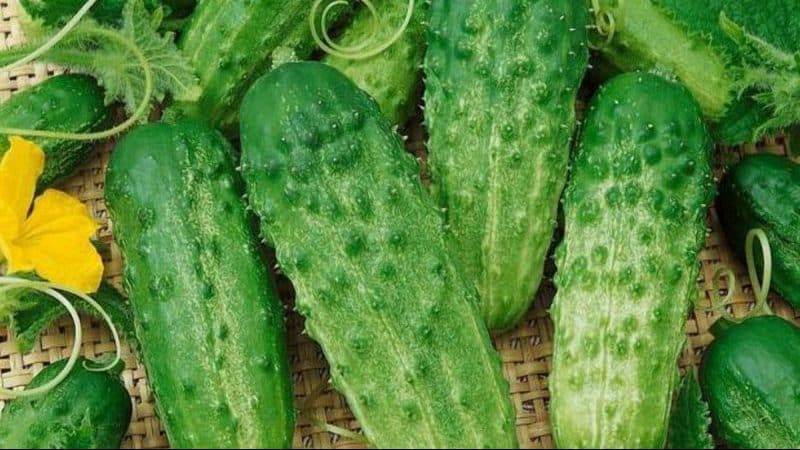
Summer residents who cultivated the variety on their plots leave mostly positive reviews about Phoenix. They are satisfied with the unpretentiousness and productivity of the cucumber.
Karina, Syzran: “I experimented a lot and tried to grow different varieties of cucumbers. I decided to go with Phoenix because it is almost perfect, and in real life it looks like the photo on the packaging.All care consists of using a special net, timely watering and treatment with biological products during the growing season. Even in October we have fresh cucumbers, just as tasty and juicy as in summer. This variety is also suitable for canning.”
Inna, Krasnogorsk: “The Phoenix cucumber surpasses all other varieties in terms of fruiting period. You just need to water regularly, and you will harvest until frost. I harvest the crops and water them about every other day, because if there is a lack of moisture, bitterness appears in the fruits. The bushes should be planted further away so that they do not interfere with each other.”
Tatyana, Kislovodsk: “The garden is located far from the house, and it is often impossible to water it. I went through many varieties and settled on Phoenix. It is unpretentious and will withstand drought and insufficient watering. I often weeded near the bushes so they could breathe. I roll up cucumbers until late autumn. I always sowed seeds without bothering with seedlings.”
Conclusion
The Phoenix variety has long established itself as the best option for growing in less than favorable conditions. It can easily withstand summer drought and slight cold snaps in autumn, is completely unpretentious in care and produces fruits of excellent quality.